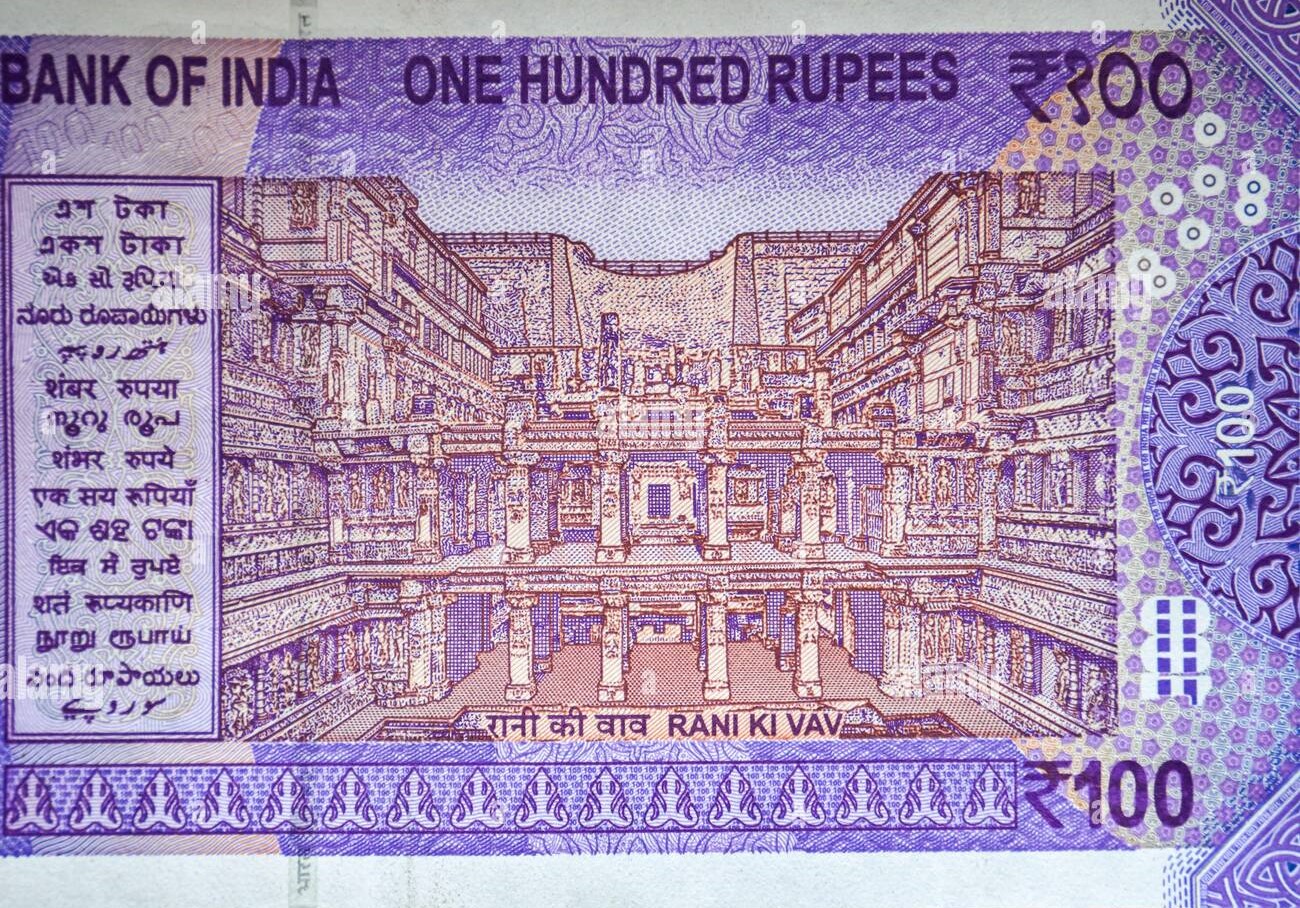When you any of the ₹10 note to the ₹2000 note have you ever wondered what the image on the back truly signifies? Beyond its monetary value, Indian currency tells a story—of our culture, achievements, and national pride. Each note in your wallet is a canvas of India’s history, artistry, and aspirations. So let’s dive deep into “What do the motifs on Indian currency really mean?”

Motifs means a picture or pattern on something. Indian currency notes feature a range of motifs that reflect the country’s rich cultural heritage, biodiversity, and economic progress. These motifs are not just decorative—they’re chosen to convey India’s identity, achievements, and values.
A Brief History of Indian Currency
Let goes back in Indian History to know more about Indian currency. The history of Indian currency traces back to ancient times, when silver punch-marked coins were used under the Mahajanapadas around 6th century BCE. Fast forward to medieval India, rulers like Sher Shah Suri introduced the Rupiya, a precursor to the modern rupee.
Post-independence in 1947, Indian banknotes underwent major transformations. Initially featuring the British monarch, Indian currency later saw the introduction of the Ashoka Pillar, and finally the iconic image of Mahatma Gandhi in 1996, forming the Mahatma Gandhi series. In 2016, a more vibrant, secure, and symbolic version of our currency was introduced as the Mahatma Gandhi (New) Series.
Why Are These Motifs Chosen?
Motifs are not randomly chosen. The Government of India and Reserve Bank of India (RBI) use them to:
- Celebrate India’s cultural and architectural heritage
- Showcase scientific achievements and progress
- Foster national pride and unity
- Educate citizens about the country’s diversity
Every motif reflects a deeper message—from the precision of space science to the grandeur of ancient temples. Motifs on Currency is also a part of the Government of India Plans during Medieval periods. Kings used coins to promote their Victories, a Scheme, send messages between the King and his people by printing on coins
🏛️ Motifs on Current Indian Banknotes
| Denomination | Color | Motif | Theme |
|---|---|---|---|
| ₹10 | Chocolate Brown | Sun Temple, Konark | Cultural Heritage |
| ₹20 | Greenish Yellow | Ellora Caves | Cultural Heritage |
| ₹50 | Fluorescent Blue | Hampi with Chariot | Cultural Heritage |
| ₹100 | Lavender | Rani ki Vav (Queen’s Stepwell) | Cultural Heritage |
| ₹200 | Bright Yellow | Sanchi Stupa | Heritage & National Identity |
| ₹500 | Stone Grey | Red Fort | Governance & National Pride |
| ₹2000 (withdrawn) | Magenta | Mangalyaan (Mars Orbiter Mission) | Scientific Achievement |
What Each Motif Represents
₹10 – Sun Temple, Konark
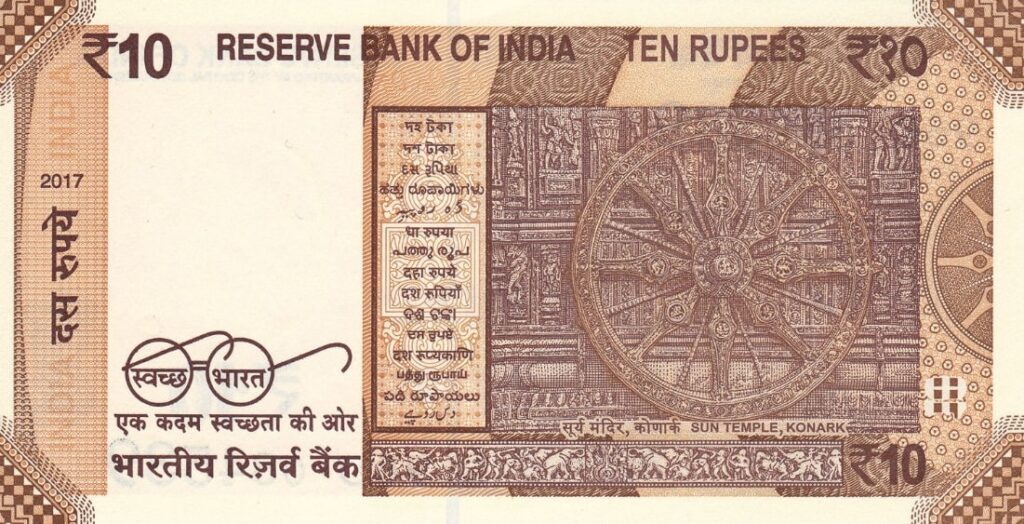
This stunning 13th-century temple in Odisha symbolizes India’s architectural genius and deep spiritual roots. The chariot-shaped structure dedicated to the Sun God reminds us of India’s legacy of astronomy and art.
Color: Chocolate brown
Dimensions (mm²): 120 x 63
Year issued: 2006
Value: ₹10 (approx. $0.13)
Years of printing: January 2018 – present
₹20 – Ellora Caves
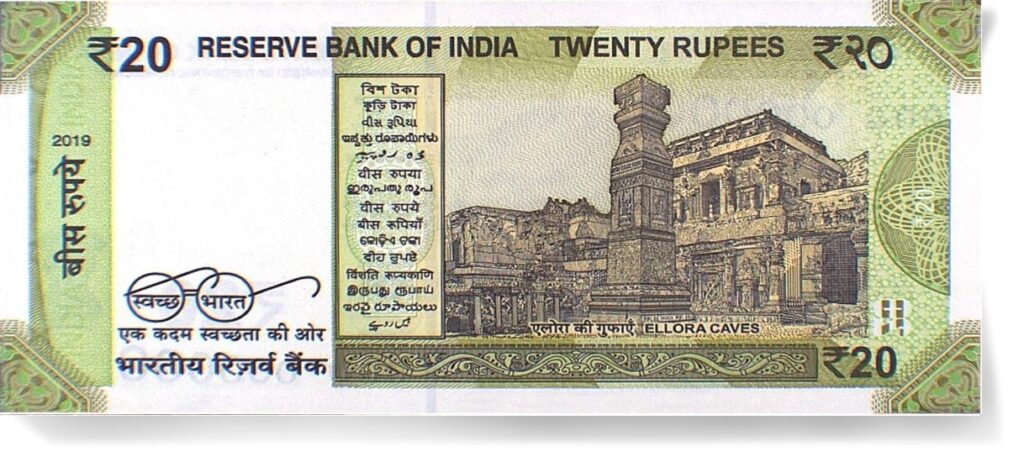
Showcasing rock-cut art from three religions—Hinduism, Buddhism, and Jainism—the Ellora caves in Maharashtra signify India’s unity in diversity.
Color: Orange-Red
Dimensions (mm²): 130 x 63
Year issued: 2001
Value: ₹20 (approx. $0.27)
Years of printing: April 2019 – present
₹50 – Hampi with Chariot

Hampi in Karnataka is a UNESCO World Heritage Site and was once the capital of the mighty Vijayanagara Empire. The stone chariot is a symbol of power, prosperity, and artistic excellence.
Color: Fluorescent blue
Dimensions (mm²): 140 x 66
Year issued: 1975
Value: ₹50 (approx. $0.67)
Years of printing: August 2017 – present
₹100 – Rani ki Vav
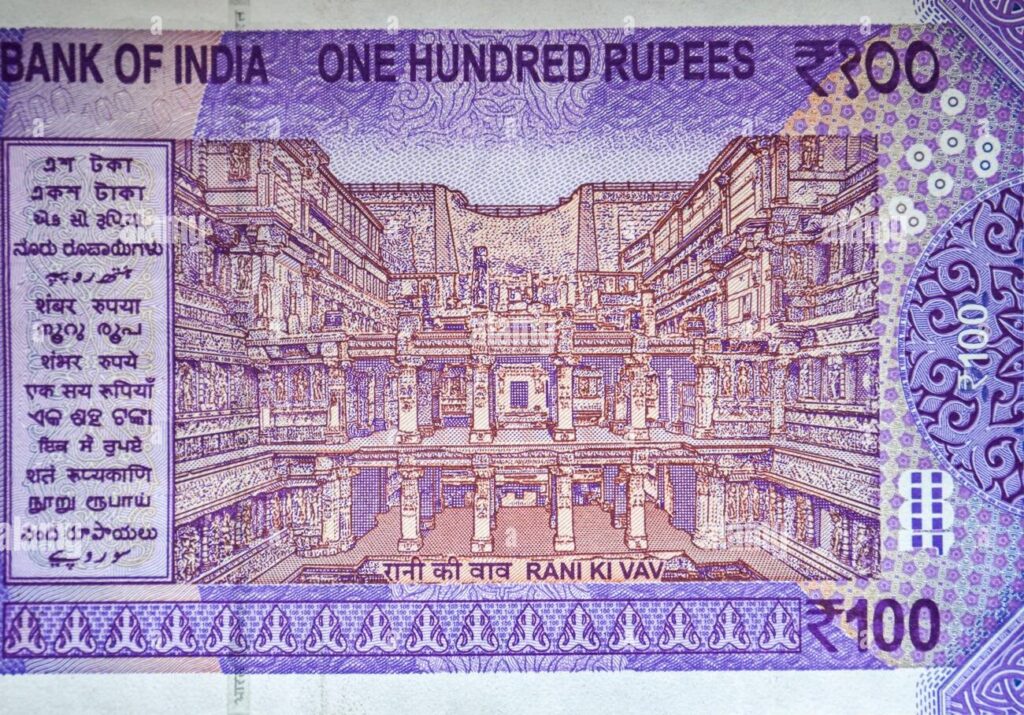
This 11th-century stepwell in Gujarat was not just an architectural marvel but also an ancient water conservation system. A testimony to innovation in utility and design.
Color: Blue-green, Brown-purple
Dimensions (mm²): 140 x 66
Year issued: 1996
Value: ₹100 (approx. $1.25)
Years of printing: July 2018 – present
₹200 – Sanchi Stupa

One of the oldest stone structures in India, built during the reign of Emperor Ashoka, representing peace and Buddhist heritage.
Year issued: 2017
Dimensions (mm²): 150 x 66
Value: ₹200 (approximately. $3)
Years of printing: 25 August 2017– present
₹500 – Red Fort
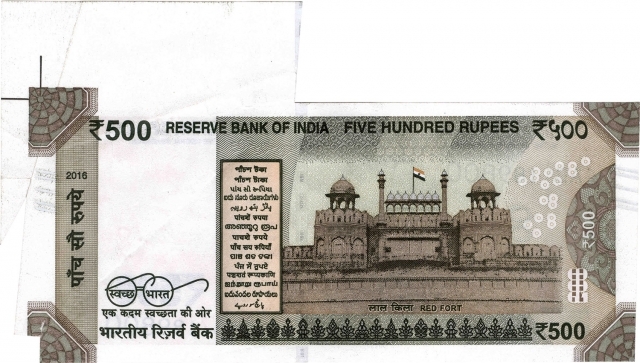
India’s seat of power, this iconic structure in Delhi marks our independence and sovereignty. It’s from here the PM addresses the nation every 15th August.
Color: Stone Gray
Year issued: 2016
Dimensions (mm²): 150 x 66
Value: ₹500 (approx. $6.75)
Years of printing: 10 November 2016 – present
₹2000 – Mangalyaan (Mars Orbiter Mission)
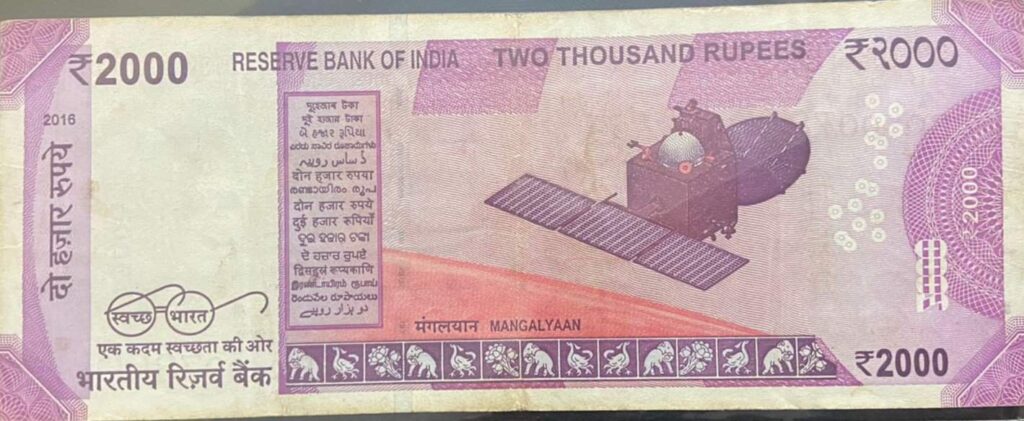
A symbol of India’s space prowess, this showcases ISRO’s achievement in launching a cost-effective Mars mission, making India the first Asian nation to do so successfully.
Color: Magenta
Year issued: 2016
Dimensions (mm²): 170 x 66
Years of printing: 2016–2017
Why People Are Searching for This
What are the pictures on Indian currency notes?
History behind Indian banknotes
Indian currency new design meaning
Keywords: Indian currency motifs, history of Indian rupee, images on Indian notes, why motifs are used in currency, Indian currency design meaning, cultural heritage in Indian currency

